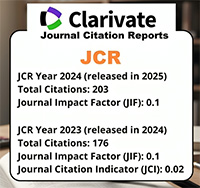Utilidad de la malla de polietileno de baja densidad, en la plastia inguinal sin tensión. / Utility of a low-density polyethylene mesh in inguinal hernia repair without tension.
Resumen
Resumen.
La malla de polietileno de baja densidad (PEBD) tipo mosquitero, se ha utilizado como una alternativa barata a la de polipropileno (PP) para la reparación de hernias inguinales sin tensión. El objetivo fue comparar ambas en términos de dolor, infección, rechazo y recurrencia. Se realizaron 31 plastias inguinales con técnica de Liechtenstein en 28 pacientes, utilizando en forma aleatoria 1) malla de PEBD ó 2) malla PP. Se registró en forma ciega infección y dolor en el postoperatorio, a los 7 y 30 días, y rechazo o recurrencia a 3, 6 y 18 meses. No existieron diferencias significativas entre los grupos de PEBD y PP, en dolor, infección, rechazo o recurrencia. El costo por procedimiento fue 58% menor en el grupo de PEBD. Se concluye que la malla de PEBD es una alternativa segura y económica para la plastia inguinal abierta sin tensión ya que es 500 veces más económica que la de polipropileno
Abstract.
The low-density polyethylene (LDPE) mesh mosquito-net type has been used as an economical alternative to the polypropylene (PP) mesh for the repair of inguinal hernias without tension. The objective of this work was to compare both materials in terms of resulting pain, infection, rejection and recurrence of the hernia. We performed 31 inguinal hernioplasties with the Lichtenstein technique in 28 patients, randomly using the 1) LDPE mesh or the 2) PP mesh. Postoperative infection and pain were recorded at seven and 30 days, and rejection or recurrence at three, six and 18 months. There were no statistically significant differences between the groups of LDPE and PP, with respect to infection, recurrence and rejection frequency. Measured pain was similar in both groups. The cost per procedure in the LDPE group was 58% lower compared to the PP group. We concluded that the properties of the LDPE mesh are similar to those of the PP mesh. There were no differences in infection, rejection and recurrence, and LDPE mesh is 500 times cheaper than the polypropylene mesh.
Descargas
Citas
Prakash D, Heskin L, Doherty S, Gal- vin R. Local anaesthesia versus spinal anaesthesia in inguinal hernia repair: A sys- tematic review and meta-analysis. Surgeon 2017;15(1): 47-57.
Guía de práctica clínica. Diagnóstico y tra- tamiento de hernias inguinales y femorales, CENETEC, Ed., México: Secretaría de Sa- lud; 2008.
Amid PK. Lichtenstein tension free hernio- plasty: Its inception, evolution, and princi- ples. Hernia 2004; 8(1): 1–7.
Spencer NF, Quereshy F, Camilotti BG, Pitzul K, Kwong J, Jackson T, Penner T. Hospital costs associated with laparoscopic and open inguinal herniorrhaphy. J Soc Lap Surg 2014;18(4): e2014.00217.
Tongaonkar RR, Reddy BV, Mehta VK, Singh N, Shivade S. Preliminary multi- centric trial of cheap indigenous mosquito- net cloth for tension-free hernia repair. Indian J Surg 2003;65:89-95.
Kalaba S, Gerhard E, Winder JS, Pauli EM, Haluck RS, Yang J. Design strategies and applications of biomaterials and devices for hernia repair. Bioact Mater 2016;1:2-17.
Lichtenstein l, Shulman A, Parviz A. Cau- sas, prevención y tratamiento de la hernia inguinal recurrente. Clínicas Quirúrgicas de Norte América. 1993;3: 567-583.
Paz VL, Atienza MG. Guía de Práctica Clí- nica de hernia inguinocrural. Santiago de Compostela: Consellería de Sanidade, Axencia de Avaliación de Tecnoloxías Sani- tarias de Galicia, avaliat; Serie Avaliación de Tecnologías. Guías de Práctica Clínica: GPC2007/01. 2007.
Conze J, Klinge U, Schumpelick V. Her- nias. In: Holzheimer RG, Mannick JA, edi- tors. Surgical Treatment: Evidence-Based and Problem-Oriented. Munich: Zuck- schwerdt; 2001.
Carbonell TF. Hernia inguinocrural. Ma- drid: Ethicon; 2001: Asociación Española de Cirujanos, 2001:19-20.
Kingsnorth A, Tongaonkar RR, Awojobi OA. Commentary on: low cost mesh for inguinal hernia repair in resource limited settings. Hernia 2011;15:491-494.
Sanders DL. An in vitro study assessing the infection risk of low cost polyethylene mosquito net compared with commercial hernia prosthetics. J Surg Res 2013; (183): E31- E37.
Freudenberg S, Sano D, Ouangre E, Weiss C, Wilhelm T. Commercial mesh versus nylon mosquito net for hernia repair: a randomized double blind study in Burkina Faso. World J Surg 2006;30:1784-1789.
Clarke MG, Oppong C, Simmermacher R, Park K, Kurzer M, Vanotoo L, Kingsnorth AN. The use of sterilized polyester mosqui- to net mesh for inguinal hernia repair in Ghana. Hernia 2009;13:155-159.
Stephenson BM, Kingsnorth AN. Safety and s terilization of m osquito n et mesh for humanitarian inguinal hernioplasty. World J Surg 2011;35:1957-1960.
Stephenson BM, Kingsnorth AN. Inguinal hernioplasty using mosquito net mesh in low income countries: an alternative and cost- e f f e c t i v e prosthesis. Br Med J 2011; 343: d7448.
Tongaonkar RR. 10 years p ersonal e x- perience of u sing l ow c ost “Low Densi- ty Polyethylene (LDPE)” mesh for inguinal hernia repair. Trop Med Surg 2013; 1:136. doi: 10.4172/2329-9088.1000136.
Wilhelm TJ, Freudenberg S, Jonas E, Gro- bholz R, Post S, Kyamanywa P. Sterilized mosquito net versus commercial mesh for hernia repair. An experimental study in goats in Mbarara/Uganda. Eur Surg Res 2007;39:312-317.
Sharma M, Sharma DB, Chandrakar SK, Sharma D. Histopathological comparison of mosquito net with polypropylene mesh for hernia repair: An experimental study in rats. Indian J Surg 2015;77(Suppl 2):511- 514 doi 10.1007/s 12262-013-0904-6.
Sanders DL, Kingsnorth AN, Stephenson BM. Mosquito net mesh for abdominal wall hernioplasty: a comparison of material cha- racteristics with commercial prosthetics. World J Surg 2013;37:737-745.
Gundre NP, Iyer SP, Subramaniyan P. Pros- pective randomized controlled study using polyethylene mesh for inguinal hernia mesh plasty as a safe and cost- effective alterna- tive to polypropylene mesh. Updates Surg 2012;64: 37-47.





















